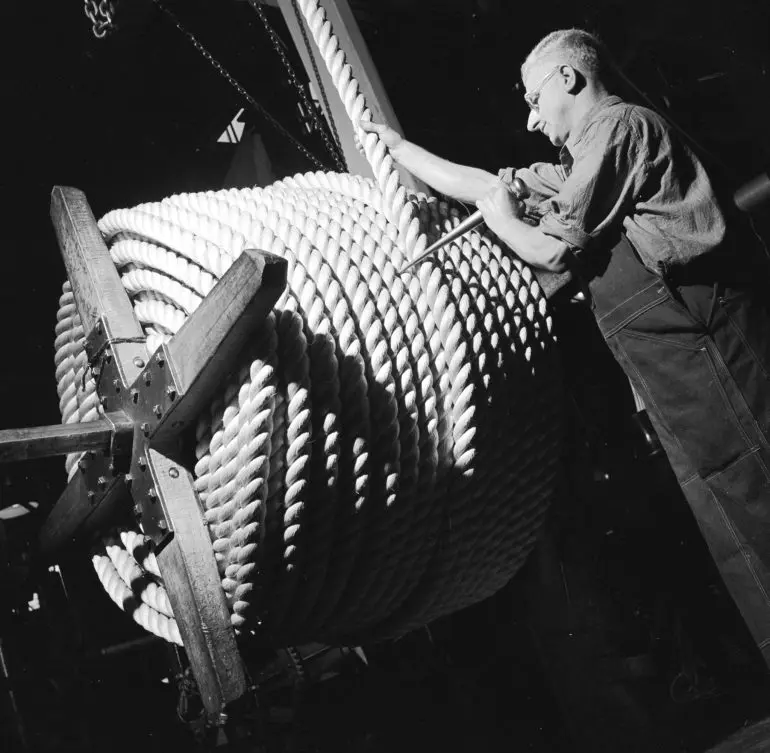In essence, rope is made by twisting or braiding a number of strands of natural or synthetic yarn to make a much stronger and longer-lasting material. Indeed the art of making rope has barely changed since the time of the ancient Egyptians.
How rope is produced in a factory is one of the most fascinating and enduring manufacturing methods and also brings up the question ‘what is rope made of?’ While synthetic rope made of nylon, polyester or kevlar is very popular, the traditional materials of rope making include natural fibres like hemp, sisal, jute, cotton, flax and linen.
These traditional materials have been used for thousands of years to make rope, and in this article we’re going to focus on a centuries-old method known as the ropewalk. Pull up a chair and read about how rope is made.
A Short History of Rope
Rope, in one form or another, has been used since prehistoric times for – amongst other requirements – pulling, tethering, carrying, lifting, winching and climbing. It’s a vital element of sailing, mountain climbing, construction, exploration and sports.
The earliest evidence of rope making is a tiny fragment of three-ply cord – so tiny it would barely stretch the width of a child’s thumbnail – which has been dated to around 50,000 years ago.
In southwest Germany, an excavated tool believed to have been used in the manufacture of rope is about 40,000 years old, and 28,000 year-old impressions of cord on clay have been found elsewhere in Europe.
However it wasn’t until around 3500 BC that the Egyptians developed specific tools to make rope from flax, animal hair, leather and fibres from date palms.
From the Middle Ages until around the end of the eighteenth century, ropewalks – very long covered buildings up to 400 metres long – were used to make rope. When we talk about how rope is produced, we’re talking about the ropewalk, the most traditional way of making rope. There aren’t many ropewalks left in the world and the process is artisan craftsmanship of the highest order.
How is Rope Made?

Circa 1950: Guiding finished rope onto a reel. An extra twist is added to the strands composing the rope so that it will not untwist. ( Photo: Douglas Grundy via Getty Images)
When it comes to rope making the traditional way, the process starts with racks of fibre yarn which are pulled together and funnelled through a separator. This allows them to be gathered evenly and consistently so that the finished product is of the required thickness along the entire length of the rope.
The Forming
The ends of three separate bundles are tied to a wheeled cart known as a forming machine which is pulled back until the bundles are pulled tight.
The forming machine then reverses back to the opposite end of the ropewalk which is as much as 400 metres away. As it moves backwards, the tracked wheels operate spinning gears that twist the yarn bundles into a very tight configuration. This ensures the tension of the rope is evenly distributed.
As the forming machine reaches the back wall, the ropemaker cuts the ends with a sharp blade. To maintain the rope’s tension and to stop it from unravelling, the ends are tied to heavy metal posts. The three bundles are then transferred to a mechanical operation which will twist the rope.
The Twisting
The three bundles are then tied to the twisting machine and each bundle is slotted into a grooved piece of wood called a top. Rotating hooks on the twisting machine then twist the rope very tightly as the top holds it in place. When the cart is back at the start of the rope walk, the 300 metre long, 12 centimetre diameter rope is formed.
The Finishing
To ensure the ends don’t fray, they are either taped with an extremely tough and long-lasting material or, as traditional ropemakers used to do it, the ends are wax-sealed. This is the final step in the traditional process of how rope is made.











